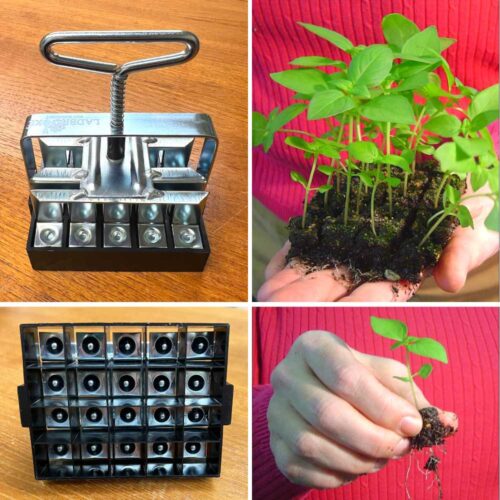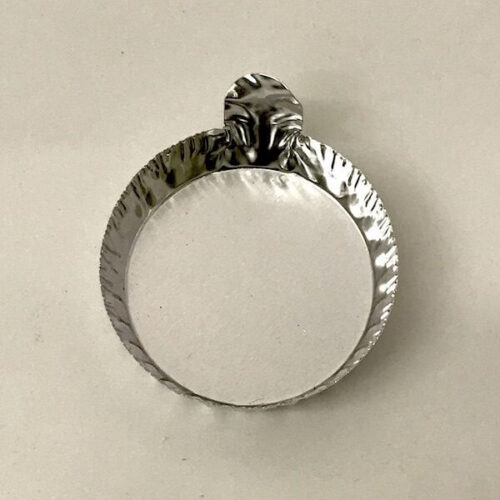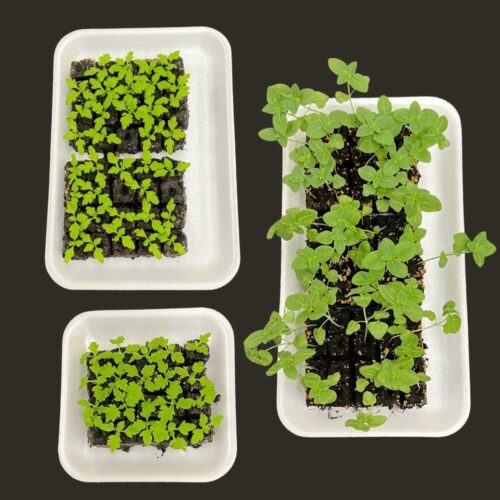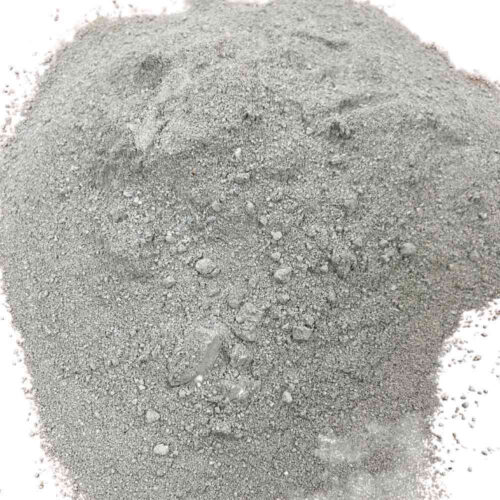Cover Crops For Small Farms & Gardens

The benefits of cover cropping far outweigh the head scratching that goes into trying to figure out how to work them into a small farm crop rotation. The magic moment on how to do this came for me when I decided to only grow cover crops that were easy for me and to have cover crop seed on hand at all times. My way may be simple, but it has allowed me to include some cover cropping on my small urban farm where space is always at a premium. It has added tons of organic mass to our soil and more.
Cover crops provide habitat and food sources for pollinators and other beneficial insects, add organic matter to the soil, and can even add nitrogen to the soil. Some are allelopathic, which means they can affect the later planting and growth of your cash crop so choose your cover crops carefully.
I use a bag spreader to plant my cover crop seed. Covering the seed greatly increases germination. I cover the seed by doing a shallow tilling or raking it in by hand. I allow Mother Nature to water the seed, watching the weather so I can plant cover crop seed around times of rain – another reason to have cover crop seed on hand, ready to plant at a moment’s notice.
Cool Season Cover Crops
Cool-season cover crops were perhaps the easiest for me to first work into crop rotation on my farm. It is best to plant a fall cover crop when it has enough time to sprout and become established with good top growth before the first frost, typically 6-8 weeks before the first fall frost. Only a third of my beds through winter are planted with a cash crop. Planting a cover crop into the remaining beds provides a way to protect the rest of the garden over the winter months.
Winter Rye
Winter rye is a great cover crop to plant later in the fall after the last cash crops are done producing. It can germinate at lower temperatures (34 degrees) and survive brutal winter weather. It starts growing again in spring when temperatures reach just 38 degrees. This brute of a seed seems to match my late planting habits while greeting my spring hopes of green when little else is growing.
One consideration for planting winter rye is to determine first what is going to be planted in the given area come spring. Rye is known for its allelopathic effects on some weeds. This means that the decomposing rye produces a toxin that can inhibit future germination (hooray!) of weed seed. While I consider this a great benefit because I only plant transplants in spring and summer, others who direct seed their cash crops in spring could run into problems with germination following a cover crop of winter rye. I get great weed control in the garden in the summer season following winter rye grass.
I tend to plant winter rye in the area where I am planning my second summer planting of annuals. This gives sufficient time for the rye to mature for the maximum organic mass before incorporating it into the soil. I plow it under as the heads are beginning to develop and then leave it in the garden for 2-4 weeks to start dying off and begin to decompose. I follow with preparing the field as normal. Rye takes longer to decompose than crimson clover.
I like to plant crimson clover as early in the fall as possible. It gives its best performance when it is allowed to grow and cover the soil before the first frost. Because it is in the legume family it will also add some nitrogen to the soil in addition to organic mass. If you have chickens be aware that they adore clover and they can pulverize a planting quickly in the fall as it is getting established. Controlled exposure to the patch can work for chickens and their owners.
I tend to plant crimson clover where the first summer annual planting is going the following season. To reap the full benefit of nitrogen and organic mass from the clover the target time to incorporate it into the soil is when it is at its prettiest – in its full glory of bloom. This tends to happen in early spring for us, so it is a perfect fit for the summer planting. Turning the clover into the soil by tilling only has worked well for us. It decomposes quickly and is ready for planting in just a couple of weeks.
Warm-Season Cover Crops
A great summer addition to the garden is buckwheat because it grows quickly from seed to bloom in about 30 days. It feels as though it grows in the blink of an eye. This is the cover crop that taught me to always immediately plant into a torn-down bed if there is not a cash crop ready to be planted in the next few days.
As soon as a bed of flowers is torn down, mowed, and tilled, I grab some buckwheat seed, scatter it, and cover it with soil. Before I know it, the buckwheat has germinated and is making a beautiful canopy of vegetation and will soon be blooming. I will repeat buckwheat plantings if cash crops are not ready yet to be planted into a bed. Because it grows so quickly, it makes an excellent weed suppressor and it outgrows most weeds. It should be incorporated into the soil when it is in bloom but before it sets seed. Another great benefit is the stems are hollow so it is easy to turn into the soil with a shovel and it breaks down fast.
Reap the benefits – make cover crops a part of your garden!
Recommended For You:
Field & Garden #217: Three No-Till Cover Cropping Pitfalls with Jonathan Leiss
The Field and Garden Blog is produced by Lisa Mason Ziegler, award-winning author of Vegetables Love Flowers and Cool Flowers, owner of The Gardener’s Workshop, Flower Farming School Online, and the publisher of Farmer-Florist School Online and Florist School Online. Watch Lisa’s Story and connect with Lisa on social media!





